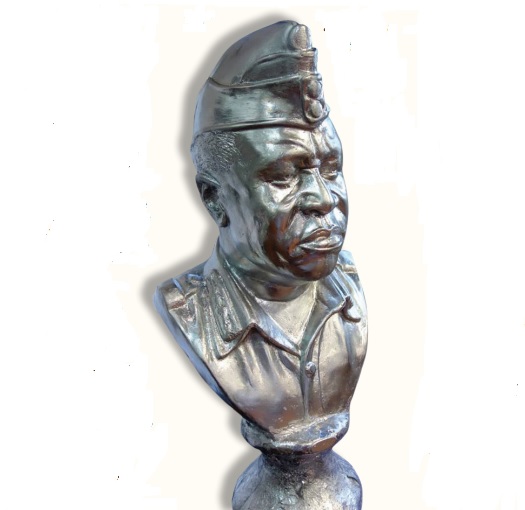
Kampala, Uganda | DOMINIC MUWANGUZI | The board game (Omweso) is a gendered installation that highlights the patriarchal nature of the African traditional society.
As such, it is a game that is only reserved for the male specie and women are forbidden from playing it because they have to perform household duties.
This form of gender inequality is an extension of the many taboos women face in traditional African household.
In response to this traditional stereotype, Dr. Rose Namubiru Kirumira sculpts an installation of saucepans titled Entamu, Esefuliya,Essepiki to demonstrate both the notion of gender inequality in the home and how traditionally women played the Omweso in the kitchen using cooking pots without the knowledge of their husbands.
Incidentally, the latter manifests, how intelligent women were, albeit the stereotype that they were not smart enough to play the game. While navigating the relationship between Omweso and the home space, the artist deploys new and burnt sauce-pans, and barbed wires to evoke a figurative narrative on the subject of gender imbalance to the audience.
The burnt sauce-pans contribute to the common-placed belief that by playing the board game, women would neglect their household chores including cooking. The burnt cooking pot is a symbol of that negligence in the home.
The barbed wire on the saucepans, demonstrates the idea of restriction, and the new sauce-pans in the installation are a metaphor to opening up new possibilities of women playing the Omweso, which incidentally the artist’s mother played in secrecy in the kitchen.
Such imagery is also evident in Dorah Kasozi’s installation of paper beads titled Rejection Strikes Back 2018. The artwork is an inspiration from the women beaders; those who get contracts from corporations to make paper-beads to sell in the external market.
Often times, those beads that do not meet the standards of these companies are rejected, yet the women end up selling them to individual buyers on the city streets. Such experience can be interpreted as a figurative narrative to the subject of women empowerment socially, economically and sometimes politically.
Through sculpting these paper beads, women are able to negotiate for power in positions that are traditionally specified for men. More so, the idea of adopting the discarded materials into their personal life- selling them to individuals to make ends meet- resonates with the concept of how women can play crucial roles in society, in spite of being considered worthless or inferior by the male.
Nonetheless, the different textures deployed in the installation immediately conjure the diverse potential women have in the community, and also provide a narrative on the beauty of the woman, regardless of the gender stereotypes.
Besides the affirmative artistic narrative that permeates in the female dons artworks, Jacob Odama’s bust of Idi Amin titled Field Marshall Idi Amin Dada evokes the notion of studio dexterity that is much familiar with the university dons.
The artist employs the medium of fibre glass to sculpt a sturdy head figure of the former president who courted both controversy and admiration globally. In building the stocky figurine, the artist sought to explore the double edged character of the ex-president, with specific attention to his much- feared demeanor.
The technique of dressing him in military garb complete with a dreadful countenance, serves the purpose of emphasizing how he was perceived on the global political arena.
In exploration of the aesthetic aspects of art, Stephen Gwoktcho’s painting The life of a Slum Child, emphasizes aspects of perspective, light, tonality and texture that are essential in the area of picture construction.
The oil painting is a figurative showcase of the life of children in slums like Ki-Mombasa where the drawing was set. In the picture a young boy stands in the foreground with an open smile, perhaps unaware of the plight of poverty, disease and alcoholism that surrounds him. In the background, the full glare of social deprivation stares at the audience.
The abodes are worn out with cracks eating away the muddy walls of the settlements; a sea of filthy water covers the courtyard with objects floating in the open space; while a woman sits idly on a stool.
The picture will immediately spark conversation on the subject of social ills that go on in such communities, but also will remind the audience of the obvious social imbalances that are prevalent today.
Unlike the previous editions of Different But One, this episode prides in showcasing not only fresh works, but in emphasizing the research processes that were undertaken by the lecturers during the production of their artworks.
Such vibrancy hopefully, can be reechoed in the coming editions to highlight the innovative skills of the dons.
*****
The exhibition is showing now at the Makerere Art gallery.
 The Independent Uganda: You get the Truth we Pay the Price
The Independent Uganda: You get the Truth we Pay the Price



